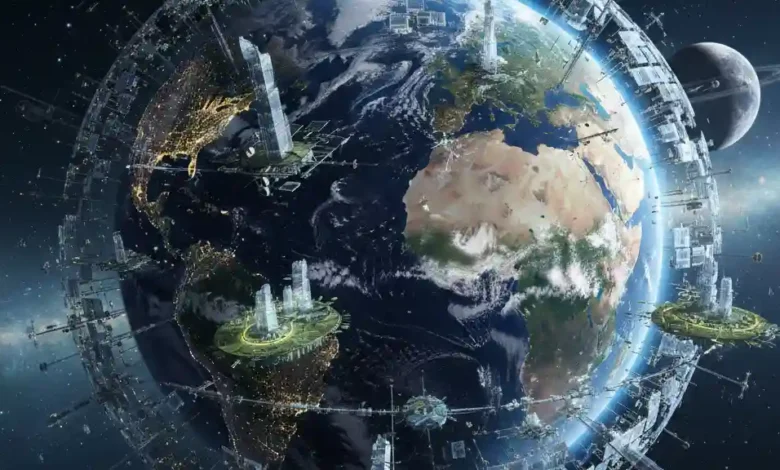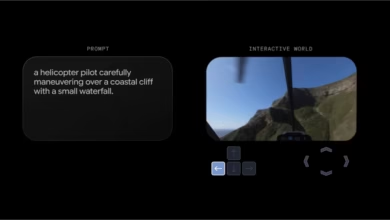
Imagine waking up in a world where energy is as abundant as the air you breathe. Cities powered entirely by the planet’s natural forces like solar winds, geothermal heat, and oceanic tides, without a single fossil fuel in sight. The global climate is meticulously controlled, preventing disasters such as hurricanes or droughts. Space travel is routine, and humanity collaborates as one unified species, unbound by national borders or resource wars. This isn’t science fiction; it’s the hallmark of a Type 1 civilization on the Kardashev scale. But how different would this reality be from our chaotic, energy-hungry world today? And more intriguingly, do we stand a realistic chance of achieving it? If so, how long might it take? Let’s dive deep into this thought-provoking journey, exploring the transformations, hurdles, and timelines that could redefine our existence.
Understanding the Kardashev Scale: A Cosmic Yardstick for Progress
The Kardashev scale, proposed by Soviet astronomer Nikolai Kardashev in 1964, classifies civilizations based on their ability to harness and utilize energy. It’s not about flashy gadgets or interstellar empires but raw energy consumption as a proxy for technological maturity. The scale starts at Type 0 (primitive, like early humans) and escalates:
- Type 0: Civilizations that rely on basic, localized energy sources, such as burning wood or fossil fuels.
- Type 1: A planetary powerhouse, capable of capturing and using all available energy on its home world, equivalent to about 10^16 watts, the total energy Earth receives from the Sun, plus internal planetary sources like geothermal and nuclear.
- Type 2: Stellar dominators, harnessing the full output of their star (around 10^26 watts), perhaps via Dyson spheres.
- Type 3: Galactic overlords, commanding the energy of an entire galaxy (10^36 watts).
Higher types, like Type 4 (universal) or Type 5 (multiversal), are speculative extensions, but Type 1 is the first major milestone. Today, humanity hovers at approximately 0.72-0.73 on this scale, meaning we’ve mastered only a fraction of Earth’s potential energy, roughly 10^13 watts from sources like oil, coal, nuclear, and renewables. We’re not even fully planetary yet, still grappling with inefficiencies and inequalities in energy distribution.
This scale provokes a profound question: What if energy abundance unlocked solutions to our deepest crises? It challenges us to think beyond survival toward mastery.
Life in a Type 1 Civilization World: Radical Differences from Today
Reaching Type 1 status wouldn’t just mean more power plugs; it would fundamentally reshape every aspect of human life. Here’s a vivid, detailed exploration of how our world might transform.
Energy Mastery: From Scarcity to Infinite Abundance
Today’s energy landscape is fragmented and wasteful: fossil fuels dominate, contributing to climate change, while renewables like solar and wind provide only about 20% of global needs. In a Type 1 civilization, we’d harness 100% of Earth’s incoming solar energy (about 1.74 × 10^17 watts annually), plus geothermal, tidal, and fusion power. Imagine vast solar arrays in deserts, orbital mirrors beaming sunlight to night-side cities, and fusion reactors mimicking the Sun’s core for clean, limitless energy.
No more blackouts or oil wars. Energy would be democratized, free or near-free for all, powering desalination plants to end water shortages and vertical farms to eradicate hunger. Transportation? Hyperloops and electric aircraft zipping across continents, fueled by planetary grids.
Technological Advancements: AI, Biotech, and Beyond
With energy abundance, technology explodes. Agentic AI autonomous systems that act proactively would manage global systems, optimizing everything from traffic to healthcare. Quantum computing solves complex problems in seconds, accelerating drug discovery and climate modeling.
Biotech merges with nanotech: Self-repairing materials fix infrastructure instantly, while gene editing eliminates diseases. Space becomes accessible, with regular trips to orbital habitats or the Moon for resources like helium-3 for fusion. Daily life? Augmented reality overlays enhance education and work, with AI companions handling mundane tasks, freeing humans for creativity and exploration.
Societal and Economic Shifts: Unity Over Division
Today’s world is divided by borders, ideologies, and inequalities. A Type 1 society demands global cooperation—think of a true world government or federated alliances managing planetary resources. Wars over resources vanish as abundance reigns.
Economically, we’d transition from scarcity-based capitalism to a post-scarcity model. Universal basic services (energy, food, housing) become rights, not privileges. Work evolves toward passion-driven pursuits, art, science, and philosophy, while AI handles labor. Population stabilizes through education and longevity tech, extending lifespans to centuries.
Culturally, a planetary identity emerges, blending diverse traditions into a harmonious whole. Education focuses on stewardship, fostering curiosity about the cosmos.
Environmental Harmony: Healing the Planet
Ironically, the path to Type 1 requires overcoming our environmental sins. In this future, we’d control weather patterns to prevent extremes, using geoengineering like atmospheric shields. Biodiversity thrives in restored ecosystems, with carbon capture reversing climate damage.
Cities become eco-utopias: Floating megastructures on oceans, underground habitats, or arcologies housing millions sustainably. Pollution? A relic of the past, as waste is recycled at the atomic level.
This vision isn’t a utopian fantasy; it’s a logical extension of current trends, but it begs the question: Can we actually get there?
The Path to Type 1 Civilization: Realistic Chances, Challenges, and Opportunities
Yes, humanity has a realistic shot at Type 1 status, but it’s not guaranteed. We’re at a pivotal crossroads, with exponential tech growth clashing against existential risks.
Major Challenges: Hurdles We Must Overcome
- Climate Change and Resource Depletion: Our fossil fuel addiction is warming the planet, potentially triggering tipping points like ice sheet collapse. Without swift decarbonization, we might regress rather than advance.
- Geopolitical Tensions: Nationalism and conflicts hinder global cooperation. Resource wars could escalate, diverting focus from innovation.
- Technological and Ethical Risks: AI misalignment, nuclear proliferation, or biotech mishaps pose “great filter” threats, events that could wipe us out before Type 1.
- Energy Scaling: Jumping from 10^13 to 10^16 watts requires breakthroughs like practical fusion, which remains elusive despite progress.
- Social Inequality: If tech benefits only the elite, revolutions could stall progress.
These aren’t insurmountable, but they demand proactive, agentic action, global policies, ethical AI frameworks, and equitable tech distribution.
Opportunities: Levers for Acceleration
- Renewable Energy Boom: Solar, wind, and hydro are scaling rapidly. With storage tech like advanced batteries, we could cover much of our needs soon.
- Nuclear Fusion Breakthroughs: Projects like ITER promise unlimited clean energy, potentially online by 2035-2040.
- AI and Automation: Agentic AI can optimize energy systems, predict crises, and accelerate R&D.
- Space Exploration: Mining asteroids for rare metals and building orbital solar farms could boost energy capture.
- Global Initiatives: Agreements like the Paris Accord show cooperation is possible; expanding them to energy sharing could unify us.
By leveraging these, we could bypass many pitfalls. Studies suggest that with sustained 2-3% annual energy growth, Type 1 is achievable.
Realistic Timeline: How Long Until We Arrive?
Estimates vary, but converging data paints a picture of centuries, not millennia. Physicist Michio Kaku predicts 100-200 years, citing our rapid progress from Type 0. A 2022 study using energy consumption models forecasts 2371 as the earliest date. Another analysis, factoring in renewables and fusion, projects 2333-2404. Optimistic views say 85-225 years if we accelerate tech adoption.
| Timeline Estimate | Source Insight | Key Assumptions |
|---|---|---|
| 85-225 years (2110-2250) | Expert predictions | Rapid renewable adoption and fusion success. |
| 2333-2404 | Energy modeling studies | Linear growth in consumption, overcoming filters. |
| By 2371 | Universe Today analysis | Sustained 2% annual energy increase. |
| Mid-24th century (2350-2450) | Nature journal forecast | Integration of global energy systems. |
Variables like breakthroughs (e.g., AGI in 2040s) could shave decades, while setbacks like pandemics add them. The key? Collective will.
To Conclude
Envisioning a Type 1 civilization stirs curiosity about our untapped potential, a world of abundance, unity, and cosmic ambition. Yet, it provokes deep reflection: Will we squander our shot through division, or rise through collaboration? The chances are real, but they hinge on choices today: investing in clean energy, fostering global ethics, and embracing AI as a partner. In 100-300 years, our descendants might look back at 2025 as the turning point. What role will you play in this epic ascent? The stars await, but first, we must master our home.
Follow Odinozz on social media. Click here.



